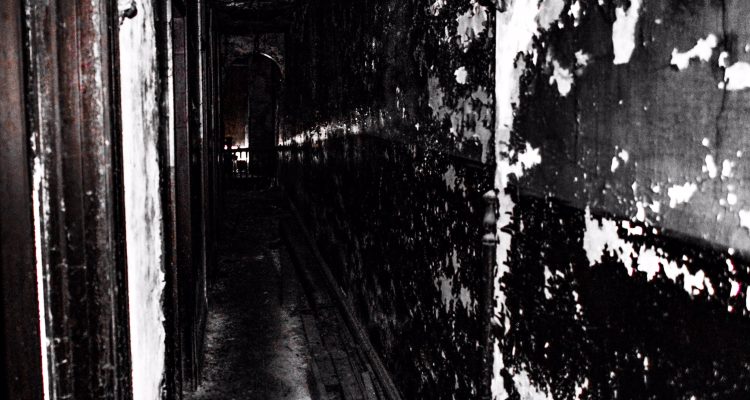All the haunts in the Upper Ohio Valley have not been as pleasant as they seem to have been at the Capitol Theatre, where spirits have remained, some say, and not all have been described as demonic as many of the interactions that have transpired at the Bellaire House.
No one knows whether it’s all true, except, of course, individuals who can profess to an encounter of their own, and if that’s the case, those people couldn’t care less who believes them because they know what they know, saw what they saw, and they never lose that feeling of what they felt. The populous is split when it comes to the paranormal, even here in the Upper Ohio Valley, where more than a century and a half of history has been recorded in some manner, and an abundance of hauntings have been reported in the cities, up along the ridges, in the center and on the edges of the counties in this region, and just about everywhere else, too.
People have seen ghosts, apparitions of people who once walked the Earth, and a lot of money has been generated utilizing the ‘”what ifs” encompassed with the belief in spirits. The movies “Ghost” (1990) and “Ghostbusters” (1986) have both gathered more than $500 million each, for example, but no longer is the bedsheet with cut-out eyes the chosen choice for Halloween costumes for children because Disney princesses for the females and sports and cartoon figures for the boys have become far more popular.
“Casper” may be too friendly for today’s fans of fright, anyway, now that television shows featuring blood-sucking vampires are top-rated, and zombies often collect prizes at costume contests. Many people, though, in the Upper Ohio Valley are absolutely convinced ghosts haunt far more often than just on Halloween night. Theories exist about why those souls have been dungeoned since death; many believe some stay behind because of what led to their deaths; others maintain the souls stay stuck until peace is resolved. That is, if peace is possible.
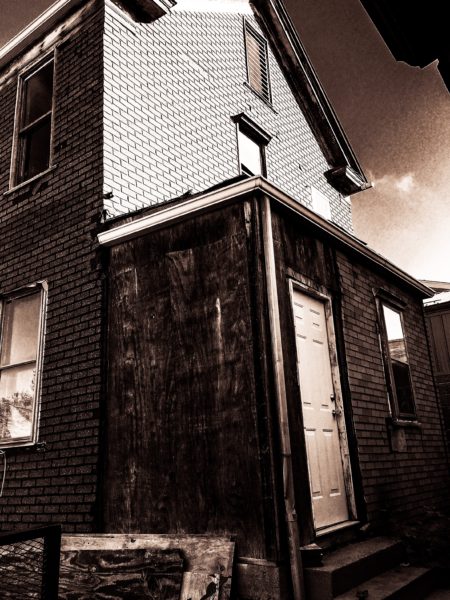
One Dead, Another Gone.
Ten years and almost one month ago police in Wheeling and Martins Ferry began an investigation into a suicide that many believe preceded a murder in East Ohio. Found to have taken his own life in a North Wheeling dwelling on Garden Court was 27-year-old James Anderson, but the whereabouts of his wife, Kristen, was unknown and still remains a mystery. Kristen reportedly had instigated a separation from her husband and was staying with a friend in Martins Ferry, and James continued to reside in the rented home in North Wheeling.
Local media reported that James had paid a visit the same evening Kristen was reported missing from her friend’s apartment and that the housing complex employed a video surveillance system that had captured images of their conversation. According to a report by WTRF, the video also displayed an unconscious Kristen being carried to a vehicle by James and showed the husband placing her lifeless body into his trunk.
However, after his wife was reported missing, James told the same television station he had no idea where she may be. At the time Martins Ferry police officers searched the apartment, they found her glasses, cell phone, clothes, and purse.
Buck Porter, a North Wheeling native and the owner of property adjacent to the house the Andersons rented, had conversed with James a number of times, and he maintains today he did not witness the controlling behavior Kristen’s family members reported to authorities after her disappearance.
“He seemed to me to be a hard-working guy. He had a full-time job, and he was taking classes at West Virginia Northern at the same time, plus he had the kids,” Porter recalled. “He was a good mechanic, and he was always wrenching on cars. He was one of those guys who would buy something, fix it, and sell it off to get another one.
“But after he would go to work, there were a lot of people who would come around,” he continued. “And she was there most days, too. I saw her sitting outside on the steps a lot, but I seldom talked to her. I talked to him more than I ever talked with her. She didn’t seem like she wanted to, but I never heard any yelling or screaming, but I was also there during the daytime and very seldom after dark.”
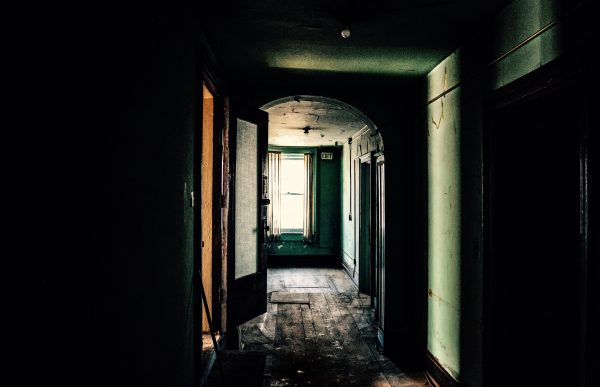
News outlets reported that James had learned about the surveillance video and that he allegedly told someone on the telephone that authorities would never find his wife. One theory drawn by investigators, including retired Wheeling Police detective Frank Mackey, involved James taking his own life because he feared he would be arrested once the video was released. Kristen Anderson, a mother of two sons, was reported missing on Oct. 1, 2006, and two days later James was discovered dead inside the house 250 feet from the Ohio River.
“There was one lady who lived in that area, but that was pretty much it, and that lady had just bought her place, so she didn’t really know anyone,” Porter said. “Because I was there a lot with my kids, she would stop and say hello to me, but I’m not sure she ever met the Andersons. I know she thought it was pretty creepy that it happened just two doors away from her, but she just kept to herself, and she still does today.
“But there’s really no one else in that area. It’s usually a pretty quiet area right near the riverfront, but there’s been more cars down there lately, and I think it’s because people go down there to do their drugs or to make out with their girlfriends,” he continued. “I’ve walked up to some of those cars to move those people along because, while I don’t mind if they want to party, I didn’t want them to be near my kids.”
When interviewed by investigators, Porter told police about something he noticed that he found odd. Porter had acquired a red, 55-gallon oil drum during a clean-out project he was hired to conduct, and a couple of days before James Anderson was found dead, Porter noticed the barrel was missing from an area next to his garage.
“And I told police that I had I told Jimmy that if he ever needed it, that he could have it. He just seemed to be a pretty handy guy, so I told him that he was more than welcome to use it for something if he needed it,” Porter said. “On that day when all of the crime-scene tape surrounded their house, I pulled up to get some of my tools for a job, and I noticed out of the corner of my eye that it was gone. I did a double-take, and yeah, that can was missing.
“The next morning is when we heard about everything. She had gone missing, and he was in the house after taking his life,” he said. “For all I know, it’s just a coincidence, but I did find it ironic that I had told him that he could use it, it came up missing, and then she was missing, and he was dead. It’s something I still think about today and especially when I go into that house.”
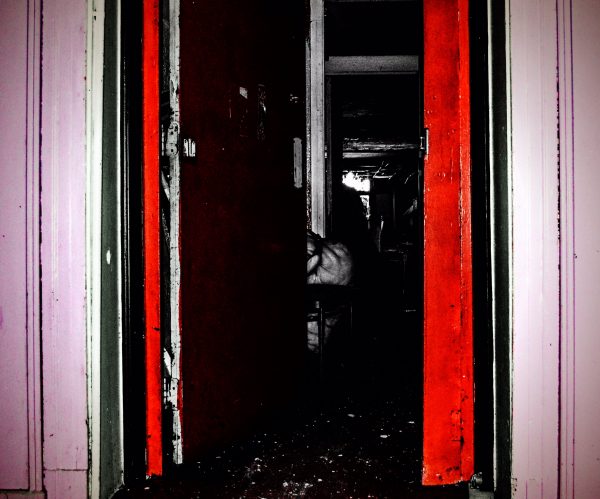
Porter now owns the dwelling, and initially his plan was to demolish it and use the land for equipment storage, but he has since decided to renovate the building for residential living.
“The house was surrounded by that crime-scene tape for a long time, and the detectives were there a good bit at first, and I saw a cleaning crew go in wearing those haz-mat suits,” he reported. “When I first walked in, though, I’m not real sure what they cleaned because the place was still pretty much a mess after he did what he did in there. The ceiling was a disaster with the blood and stuff. It was sprayed in angles that seemed impossible to me.
“Now, I don’t have forensic background, but I was pretty sure I knew what it was when we were cleaning it off the ceiling and the walls,” he said. “But one winter day after all of this happened, I pulled up to my property, and I heard running water coming from the inside, and it sounded like a pipe had split because of the temperatures. I called the owner, and he asked me to go in and turn it off, and I wouldn’t because it was an active crime scene. He had to come down, and he did, and that’s when I shut the water off. The house was still full of the family’s belongings, too.
“The owner asked me if I wanted to buy it, and I did so I would have more property in the area. I thought I would tear it down, but since, I’ve decided to keep it and fix it up,” Porter added. “I think it can be a decent property once I’m done fixing it up.”
Porter admits he initially was apprehensive about entering the house, but his children remain fearful of the property today.
“And that’s why every time I walk in, I tell Jimmy what I’m going to fix that day, and I do that because my kids are normally with me, and they know what happened there,” Porter said. “Me goofing around like that lightens the mood, I guess, but they are still terrified to go inside that house. I seriously doubt they would ever live in it with me, but it’s a 150-year-old house so Jimmy probably wasn’t the first person to die in there. That’s how I look at it anyway.
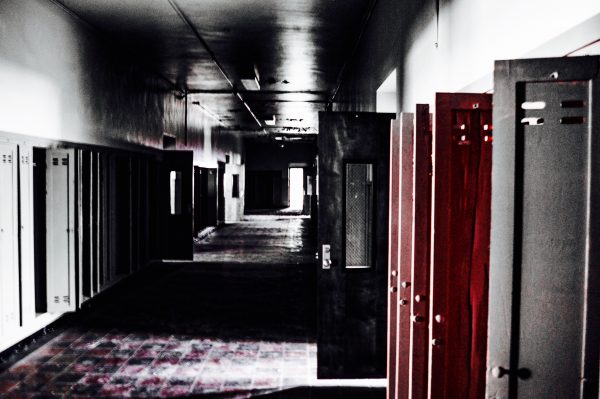
“Jimmy has never talked back to me, but others believe they have heard from her. Echo voices, white noise, things like that, I guess, have been recorded in there,” he said. “When my sister, Pam, went in and asked, ‘Would anyone in here like to say anything?’ and then she waited for an answer, and she says she heard someone say, ‘Ask James.’ So, I don’t know if I buy into that, but that’s what she told me.”
His girlfriend, Miranda Cordery, has assisted Porter with the interior demolition, and she believes she experienced an encounter with something inside.
“Miranda and I were working inside the house one time, and I had walked outside with a can of plaster to put into the truck, and I heard her yelling, ‘Quit it!’ I went back in and told her I was outside, and she said that she had been hit with plaster in her back,” Porter said “I know it wasn’t me; that’s for sure.
“She thought it was me hiding around a corner or something, but I was outside. It sounds like something really little, and I haven’t seen anything inside there, but who hit her with the plaster? I guess we’ll never know,” he said. “I’ve been using the house for storage for some time now, and as far as I can tell nothing has been moved or has been out of place. So I don’t know. Some people think it’s haunted, and going in there does give me a weird feeling, but nothing or no one has grabbed me or anything, so I just don’t know.”
“But that freaked me out; that’s for sure,” Miranda said. “I was hit with the plaster in the same room where the suicide took place, so it scared me, and after I realized Buck was outside. I kept saying, ‘I’m not trying to disturb you; I promise; I promise.’
“I told him, ‘I’m just trying to get you out of here, Jimmy. Just cleaning up your mess.’ And I talk to him every time I go into the house, and I call him ‘Jimmy,’” she said. “I act like I’m just goofing off, but someone hit me with that plaster. But, unlike other people, I would sleep overnight in that house because I like that sort of stuff. If something is going to happen inside, I want to be there. I like it when my skin crawls.”
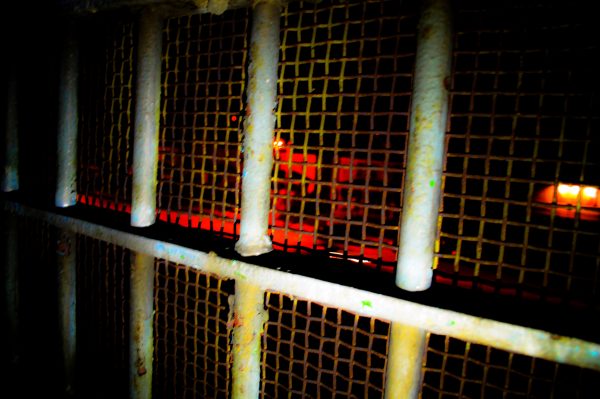
Penned In?
Chuck Ghent accepted the job because his favored employment positions in the Upper Ohio Valley were dwindling. The Bellaire resident worked at the Marx Toy factory in Glen Dale, Fostoria Glass in Moundsville, Blaw Knox in Wheeling, Wheeling-Pittsburgh Steel in East Ohio, and Wheeling Stamping.
They all closed, so in March 1986, just a few months after 20 prisoners caused a two-day riot by storming the mess hall, handcuffing guards and a kitchen staff member, and slaughtering three inmates, Ghent became a prison guard at the former West Virginia Penitentiary, a facility known to be really run by the Aryan Brotherhood and not by the state’s administration.
“All of the steel mills, the factories, and the coal mines were shutting down in the 1980s. It was the mid-80s, and everything seemed like it was shutting down,” Ghent said. “I worked at seven different factories that closed down back then, but I needed to keep working, and they were hiring guards.
“That place was a rough place with a lot of rough people in those cells,” he said. “On my first day they walked me around, and then one of the guards told me to go up to the fourth floor. That’s when the supervisor handed me a radio and a set of keys. When I asked the supervisor how to operate the cell doors, he told me to ask the inmates. Those inmates are the ones who taught me everything I needed to know to work in that prison.”
Ghent regrets working there as a guard, but he enjoys being employed now as one of the tour guides for visitors who walk the hallways and dare to visit areas where murders and suicides took place prior to the prison’s official closing in 1995. Overcrowding was the biggest of many problems inside the pen’s walls, especially when the outdoor temperature was above 80 degrees.
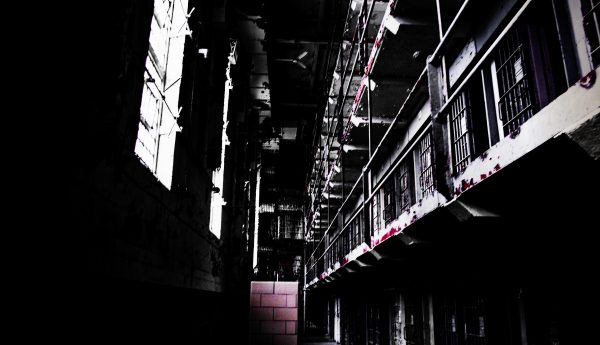
“The overcrowding caused a lot of problems, and in the summer the temperature in there was over 100 degrees during a lot of those days. It was stifling in there, and people were angry and lashing out a lot. It was a very dangerous place during those days,” Ghent said. “And while we were walking through those cell blocks we were never armed because the inmates would have taken the gun right off of you.
“To be honest, the inmates allowed us to control things, but only when they wanted to. They knew they could take the place anytime they wanted. So, as a guard, I just did what I needed to do and hoped they let me,” he said. “The guards would walk around to make sure the inmates were behaving, and we would count the inmates several times a day. The guards would even help the inmates with some things, but we would also have to tell them ‘No’ a lot, too. Most of the time, in fact, we had to tell them no.”
Perhaps that is why, one day while Ghent was on duty, one of the inmates attempted to murder him.
“I’m not sure which one, but one of them managed to put mercury in my cup of coffee,” the former guard recalled. “That was around 1990, and I never found out any of the reasons, and, to be honest, I can’t even tell you that it was really meant for me. But I got lucky. I happened to see it in there.
“I did drink most of that cup of coffee, but because it was mercury, it was still all in there. I’m still here, and that’s how I know,” he said. “But that shook me up. It made me think. I got more careful after that to protect myself because those men didn’t care. Most of them knew they were in that place for the rest of their lives anyway, so there was no punishment they feared.”
His worst memory, though, does not involve that poisoned cup of coffee, but it does involve death.

“I didn’t like seeing the guys who would hang themselves in their cells. I really hated that, and I hated it when I would see dead bodies being carried out of there,” Ghent said. “It was a hard place, so they would take their bed sheets, tie it off on the top of the bars in the vent, and they would climb up on their bed and jump off to break their necks. I hated that part of the job.
“I remember the cells where those suicides happened, but I don’t point them out during the tours. It just seems too private a thing. The only one I talk about is one suicide that took place on Christmas morning one year,” he said. “There was one hanging in one of the stairwells that morning and not in one of the cells, so I do tell our visitors about that one.”
Prisoners escaped the Gothic-style penitentiary on occasion during the facility’s 119-year history, including one break-out that gained national attention in November 1979, when 15 inmates managed to reach the outside and kill one state trooper who happened to driving past with his wife.
Ghent was a guard in February 1992, when three prisoners used a four-foot-tall, 32-foot long tunnel that traveled under the pen’s wall to reach Washington Avenue. All three escapees were convicted murderers, and all three were eventually recaptured and returned.
“There were a lot of times when someone would get out of there, but they always came back,” he remembered. “I was there for the ‘Greenhouse Escape.’ That time three of them escaped from the tunnel they dug under the prison’s wall, but that escape was supposed to involve close to 160 of them, but three of them left a lot earlier than when it was planned for.
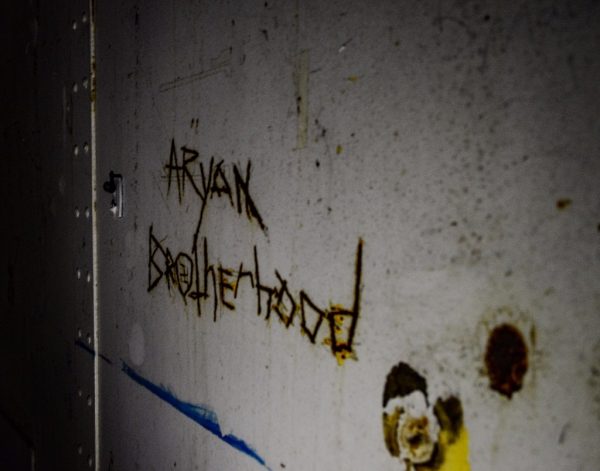
“That screwed it up for all of the others who were supposed to go through that hole, and the only reasons it was reported that quick was because a boy who was going home from school noticed the hole, and he told his parents. The parents reported right around supper time,” Ghent said. “We immediately shut down the prison and took all of the inmates back to their cells. I remember a lot of grumbling because there were a lot of guys who were supposed to go with them, but there were also some of the inmates that were laughing because they were glad someone caused some havoc in the place.”
The warden at the time of the 1992 escape was Carl Legursky, an administrator attempting a new approach in a prison known even then as a house of horrors.
“The warden had been warned several times about that greenhouse, and he was told that three that were in there were not to be trusted, but he wanted to try to change the culture inside the place and change prison life. I thought he was going too fast and trusting a lot of the wrong people,” Ghent said. “He didn’t know what he had in that place. There were a lot of evil people there who wanted to do nothing but cause problems.
“That greenhouse, though, went away soon after that escape took place. I guess that’s what it took for him to learn,” he continued. “There was no one in that pen who was happy to be there. I think they were always scheming ways to make a break, even the older inmates. That place was deadly. A lot of people died in that place.”
These days, though, the old West Virginia Pen is a destination for curious locals and tourists and also paranormal investigators from all over the world. The prison, after all, has a history of being haunted, and Ghent believes it to be true.
Strange things have been recorded on film, but he wants to see them with his own eyes.

“There have been a lot of people who have caught some pretty strange things in photos but as far as seeing a ghost or a spirit with my own two eyes, well that’s something I haven’t experienced just yet,” Ghent said. “That’s what I am waiting on. That’s what I want. I want to see it. I need to see it myself. I know there’s something going on there, but I can’t really say what. I know it’s not normal.
“Let’s just say I’ve been known to walk a little quicker when those experiences have taken place, so, yes, it’s scared me, and I like to be around other people when those things happen,” he admitted. “But three times I was alone when I heard things while I was locking down the place for the night. I got out of there pretty quick.”
Most recently movie makers with a plan for an upcoming Netflix series filmed for two days there in September, following two months of renovations to a few different areas of the prison. The series, “Mindhunter,” is based on the tales told by a former 25-year veteran of the Federal Bureau of Investigation and is expected to air in 2017.
“It’s been a pretty popular place ever since MTV went in there for that ‘Fear Factor’ show,” Ghent said. “Since then a lot of paranormal people have been there and there have been a lot more shows, and that’s got a lot of people excited. I haven’t talked with many of them, but I did sit down with the people from the show ‘Ghost Asylum.’
“I had moved over to Northern Regional, so I wasn’t around a lot when those other shows visited, but I did tell that one group about being a guard there and about how hard of a place it was. That place was nothing like Northern Regional. It’s night and day, really,” he said. “I told them about the footsteps that I’ve heard, and the knocking on the doors and on the windows, and I’ve even encountered a few voices. I’ve never been able to make out what the spirits have said, but I do know what I heard.”
It’s been three years since Ghent began as a tour guide, but this time around he enjoys his hours inside those intimidating walls and walking those halls because this former guard enjoys telling his tales to folks who intently listen to stories about the “Sugar Shack,” the infirmary and psychiatric wards, New Walls and the much more violent North Hall, and the brutality he witnessed in the South Yard.
“It doesn’t bother me at all, and I actually find it to be a fun job,” the former guard said. “That’s because it makes people happy, and I like that. I don’t think we smile enough in this country. We need to do that more.”
(Photos by Steve Novotney)


